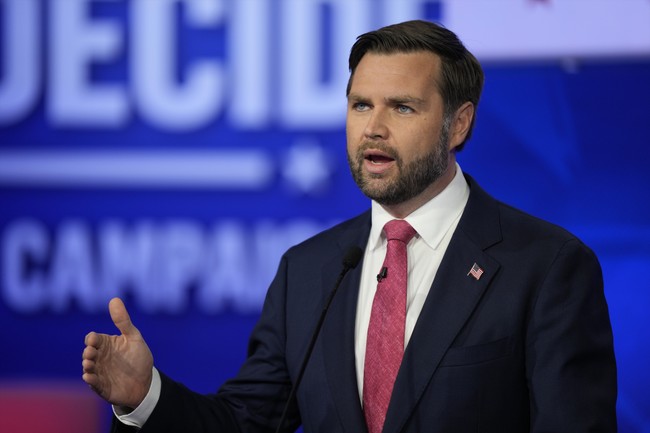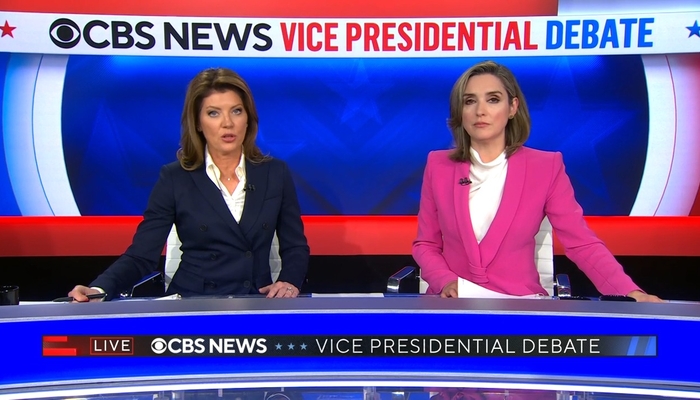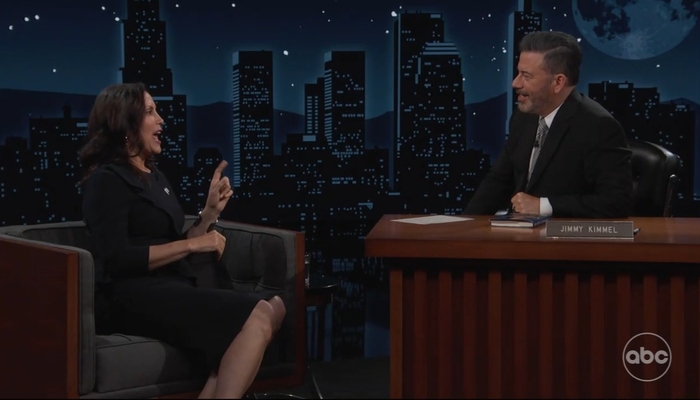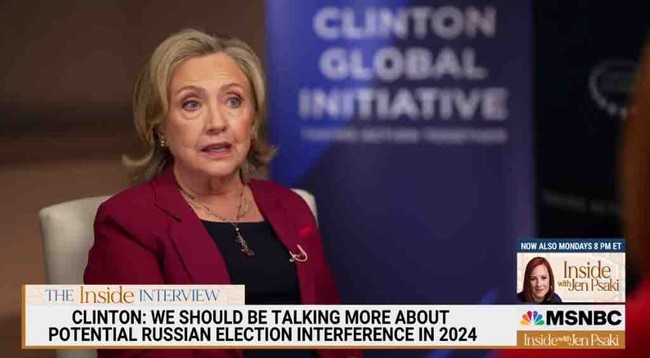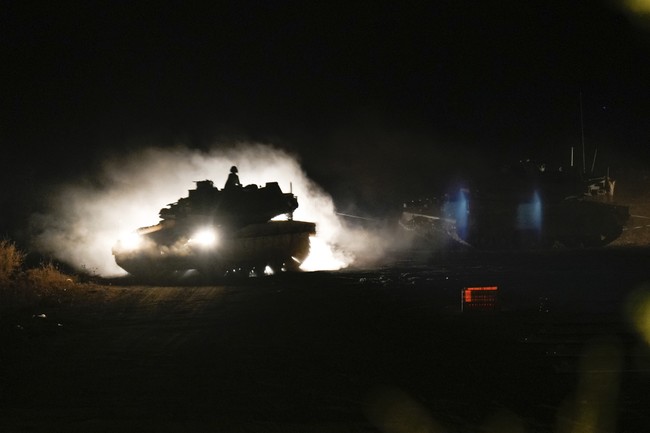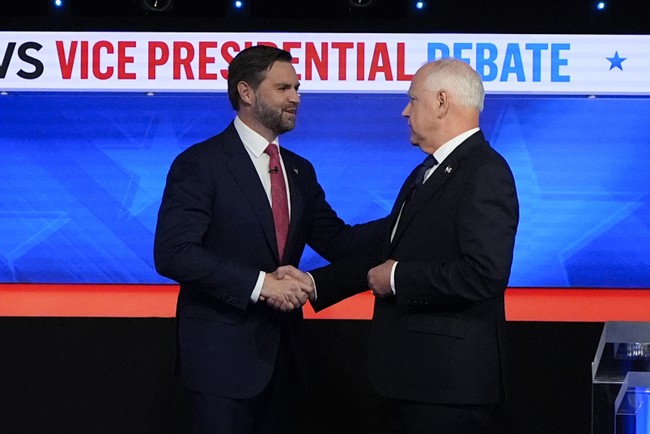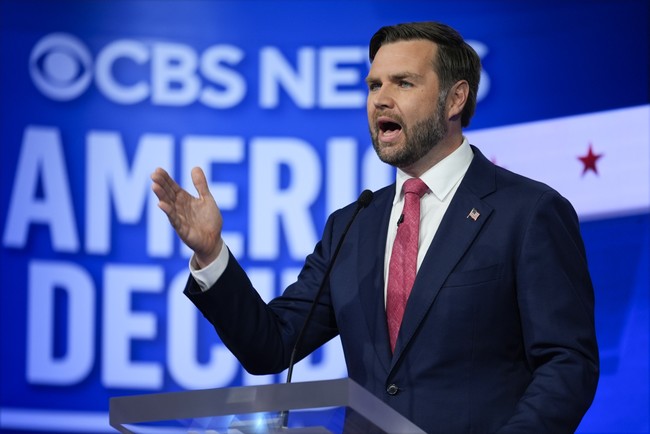
www.newsbusters.org
Kimmel Tries To Label Vance 'Weird,' Whitmer Talks Period Empowerment
After Tuesday’s vice presidential debate, ABC’s Jimmy Kimmel desperately tried to portray JD Vance as the weird one and Tim Walz as the “normal” one, to the point where he brought back the couch sex jokes and had a skit of Joel Osment as Vance incompetently making his way through a donut shop. However, later in the program, he welcomed Michigan Gov. Gretchen Whitmer, who used Kimmel’s platform to talk about period empowerment, of all things.
From his military service to Tiananmen Square to his political origin story, Walz may have a history of making things up, but Kimmel declared, “Tim Walz is a very likeable guy, he’s very normal, which is a problem for Fox News, especially because he looks like all of their viewers. He looks like he—so, they are now desperate to exploit any tiny bit of oddness they can conjure up.”
In the clip, Jesse Watters scoffed, “Timmy was at the Michigan-Minnesota game Saturday and hugged the Gopher mascot like it was his husband returning home from war.”
After mocking Watters’s response, Kimmel switched to Vance, “There was a lot of pressure on JD Vance tonight. JD Vance hasn't been under a microscope like this since his wife asked him why the couch was so sticky. But Trump had good advice, he told him, just have fun, and you know what? It seems like he did.”
Walz has also spread the fake story about Vance and the couch, but Kimmel thinks Vance is the weird one. Nevertheless, Kimmel then played a clip of Vance’s opening statement with his face made to look like that of a cat. Afterwards, Kimmel retorted, “That's how you get the single cat ladies back on your side.”
Later, Kimmel recalled, “Over the summer, JD had a lot of trouble with a donut shop and the damage from that was significant, which is why his campaign has made his donut shopping a top priority.”
In a skit, Osment played the role of Vance, “Hi. I'm Ohio Senator JD Vance. The mainstream media, they want you to think that I'm weird. They call me creepy. Cringy. Awkward. That I give people something called “the ick.” They want you to think I can't order a simple doornut. Donut. [Bleep].”
In the scene that followed, Osment was seen struggling to order a donut, punching the glass display, asking a black man how long he’s been black, dunking his donut in the man’s coffee, asking a pregnant woman “when do you spawn,” telling a child “you must be the father,” providing suggestions on how to have sex with a couch, and struggling to do the end-of-ad message.
If your campaign strategy is to paint your opponents as weird, you probably shouldn’t go on national TV and talk about your bodily functions. Unfortunately for Kimmel, Whitmer took his softball in a weird direction, “You have a very positive attitude and you go in that way, that’s—you call yourself the happy warrior. Is that something that you came up with or someone else did?”
Whitmer recalled, “Someone else did. So, I was getting ready for my first debate as governor, and EMILYs List sent me a debate coach and he said, you know, ‘The happy warrior always wins the debate' and his big tip was, 'Go to the podium right when you get there and put a big smiley face on your notes so you remember to be happy,’ and most women who are told to smile, you know, it elicits the opposite.”
Instead, she told herself, “I'm not going to do that, but I went to a Kevin Hart show in Detroit and one of the guys who opened for him, Na’im Lynn, told the story about how women are empowered and it was this hilarious Shark Week story and that’s what helped me cultivate my happy warrior.”
After Kimmel tried to clarify “Shark Week?,” Whitmer continued:
‘Shark Week MF’ was basically the call to action and it's about, women today are so much more empowered and used to be back in the day when a woman was having their period, she wouldn't want to tell you. She'd be demure and say something like, ‘Aunt Flo is in town.’ And how now when a woman's having her period, you're more empowered and you say, ‘I want to come over and see you.’ ‘You're not coming over, it's Shark Week, mother–’”
Try not to cringe too hard.
Here is a transcript for the October 1 show:
ABC Jimmy Kimmel Live!
10/1/2024
11:36 PM ET
JIMMY KIMMEL: Tim Walz is a very likeable guy, he’s very normal, which is a problem for Fox News, especially because he looks like all of their viewers. He looks like he—so, they are now desperate to exploit any tiny bit of oddness they can conjure up.
JESSE WATTERS: Timmy was at the Michigan-Minnesota game Saturday and hugged the Gopher mascot like it was his husband returning home from war.
KIMMEL: Oh, you really got him there. Jesse Watters must be a lot of fun at Disney world with the kids, huh? "Don't touch that mouse, Bobby, the other boys will think you're gay."
There was a lot of pressure on JD Vance tonight. JD Vance hasn't been under a microscope like this since his wife asked him why the couch was so sticky.
But Trump had good advice, he told him, just have fun, and you know what? It seems like he did.
JD VANCE [WITH A CAT FACE]: I want to answer the question, but I want to give an introduction to myself a little bit because I recognize a lot of Americans don't know who either one of us are.
KIMMEL: That's how you get the single cat ladies back on your side.
…
11:44 PM ET
Over the summer, JD had a lot of trouble with a donut shop and the damage from that was significant, which is why his campaign has made his donut shopping a top priority.
JOEL OSMENT [AS JD VANCE]: Hi. I'm Ohio Senator JD Vance. The mainstream media, they want you to think that I'm weird. They call me creepy. Cringy. Awkward. That I give people something called “the ick.” They want you to think I can't order a simple doornut. Donut. [Bleep]. But that's ridiculous. Follow me. Uh -- hello?
ACTRESS: Hi.
OSMENT: Okay. Uh -- uh -- how long you worked here?
ACTRESS: A year.
OSMEN: Okay. Donut.
ACTRESS: Yeah.
OSMEN: Yeah. Yeah.
ACTRESS: Which donut, though?
OSMEN: Uh -- just -- whatever makes sense. No pickles. Hold the pickles.
ACTRESS: Hold -- what -- now, I didn't get that for you.
OSMEN: The Democrats say I don't know how to talk to people, but that is just not true. Hello, worker, may I sit?
ACTOR: Sure.
OSMEN: So, how long you been black?
ACTOR: What the [Bleep].
OSMEN: I smell pregnant woman. Hello, ma'am. When do you spawn?
ACTRESS 2: That's none of your business.
OSMEN: And you, sir, you must be the father.
ACTOR 2: I'm nine.
ACTRESS 2: Please get away from us.
…
12:46 AM ET
KIMMEL: You have a very positive attitude and you go in that way, that’s—you call yourself the happy warrior. Is that something that you came up with or someone else did?
GRETCHEN WHITMER: Someone else did. So, I was getting ready for my first debate as governor, and EMILYs List sent me a debate coach and he said, you know, "The happy warrior always wins the debate” and his big tip was, “Go to the podium right when you get there and put a big smiley face on your notes so you remember to be happy," and most women who are told to smile, you know, it elicits the opposite.
KIMMEL: Yeah, it’s annoying. Yeah.
WHITMER: So, I'm not going to do that, but I went to a Kevin Hart show in Detroit and one of the guys who opened for him, Na’im Lynn, told the story about how women are empowered and it was this hilarious Shark Week story and that’s what helped me cultivate my happy warrior. It's in chapter 10--
KIMMEL: Shark Week?
WHITMER: "Shark Week MF" was basically the call to action and it's about, women today are so much more empowered and used to be back in the day when a woman was having their period, she wouldn't want to tell you. She'd be demure and say something like, "Aunt Flo is in town."
KIMMEL: Right, yeah, yeah, yeah.
WHITMER: And how now when a woman's having her period, you're more empowered and you say, "I want to come over and see you." "You're not coming over, it's Shark Week, mother–
